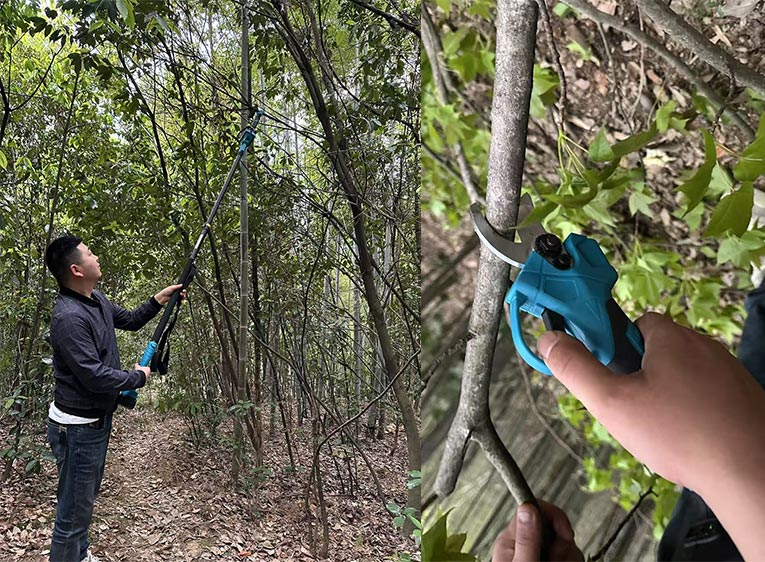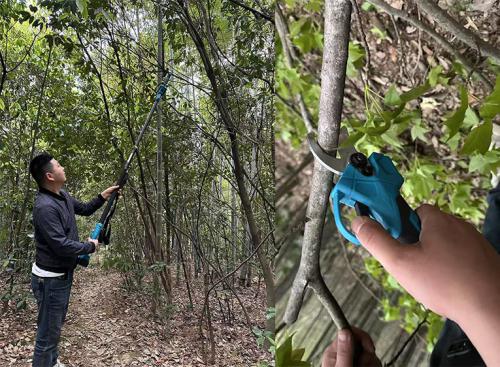Products
Contact Us
Mobile:+86 13276795413
Phone:+86 13276795413
Email:seller-tools@foxmail.com runfutool@163.com
Practical operation
usage methods and precautions of pruning scissors
- Views:41
- | Date:2025-04-09
When using pruning scissors (also known as pruning shears, gardening shears), the correct way of operation can not only improve efficiency, but also avoid tool damage and personal injury. The following are detailed usage methods and precautions:

### ** I. Preparation before use **
1. ** Check the tool status **
- Make sure the blade is sharp (a dull knife can easily crush the branch and affect the healing of the plant).
- Check whether the screws are loose and the spring bounces back normally.
- Clean the blade (residual SAP or dirt can affect the cutting effect).
2. ** Wear protective gear **
- Cut-resistant gloves (to avoid hand cuts).
- Goggles (to prevent debris from splashing into the eyes, especially when pruning hard branches).
3. ** Observe the pruning target **
- Confirm whether the thickness of the branches is suitable for pruning (general pruning shears are suitable for branches with a diameter of less than 2cm, and a saw is required for coarse ones).
- Avoid dangerous areas such as power lines and insect nests.
---
### ** Two, the correct pruning steps **
1. ** Holding position **
- Hold the main handle in the right hand (dominant hand), with the left hand to assist in fixing the branch (avoid shaking the branch).
- Thumb and index finger close to the knife shaft to increase control (figure below).
2. ** Shear Angle **
- ** Oblique cutting method ** : The blade and the branch are at a 45° Angle, and the incision is inclined to facilitate rain slide and reduce decay.
- ** Location Selection ** :
- The cutting edge is 0.5~1cm away from the bud point (too close to the bud, too far to leave the stake easy to infection).
- Retain the "collar" (the raised part of the base of the branch) when pruning at the branch to promote healing.
3. ** Power skills **
- Cut the coarse branches in two steps:
1. Cut about 1/3 depth below the branches first (to prevent the bark from tearing).
2. Cut completely from the top.
- Avoid twisting the scissors (which may damage the blade or branch).
---
### ** III. Safety precautions **
1. ** Fire prevention **
- Keep your other hand away from the edge when cutting.
- Stand firm when clipping high to avoid losing your balance on tiptoe.
2. ** Tool maintenance **
- Clean the blade after each use and apply a small amount of lubricating oil to prevent rust.
- Polish the blade regularly (gently with the whetstone at the original Angle).
3. ** Special case handling **
- When dealing with tough branches, switch to lever pruning shears (labor-saving type).
- After pruning diseased branches, wipe the blade with alcohol to prevent cross infection.
---
### ** Four, common mistakes **
- ❌ Use in reverse mode (cut with the back of the knife; it is easy to damage the tool).
- ❌ Overpruning of coarse branches (resulting in blade breakage or broken handle).
- ❌ Prune immediately after rain (moisture spreads germs easily).
---
### ** Five, pruning scissors type selection **
1. ** Bypass (Bypass) **
- Suitable for live branches, cut flat, such as Felco classic.
2. ** Chopping Board (Anvil) **
- Suitable for dead branches, single-sided blade under cutting board.
3. ** Electric pruners **
- Suitable for mass pruning, but power safety is required.
---
** Tip ** : After pruning, apply healing agent to the incision (for large wounds) to promote plant recovery. Regular maintenance of tools can extend their service life!




 13276795413
13276795413 13276795413
13276795413